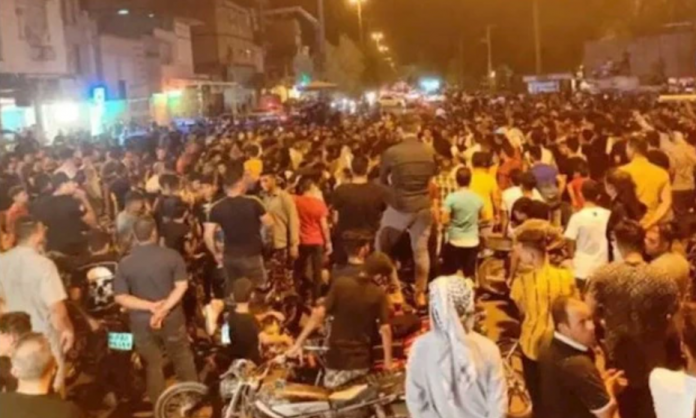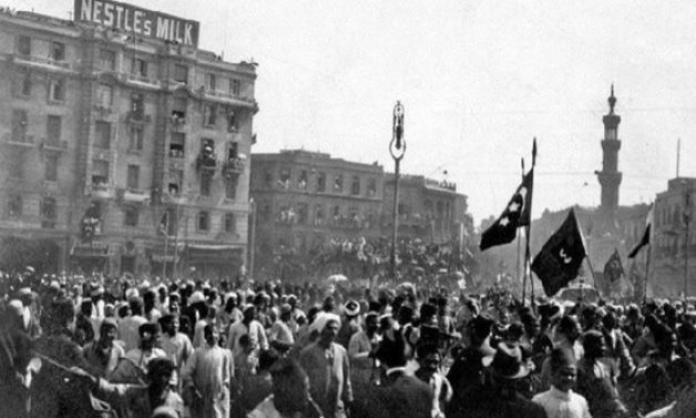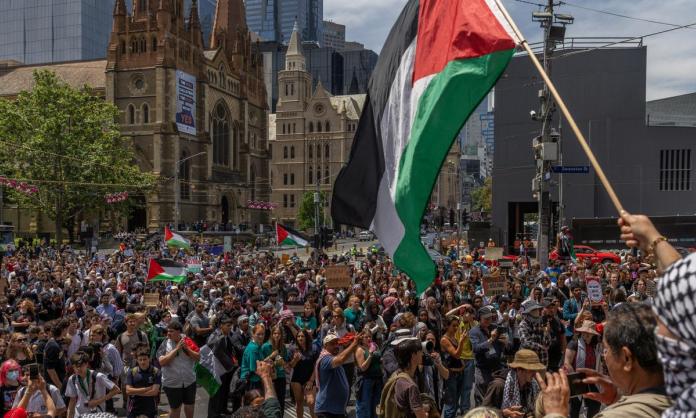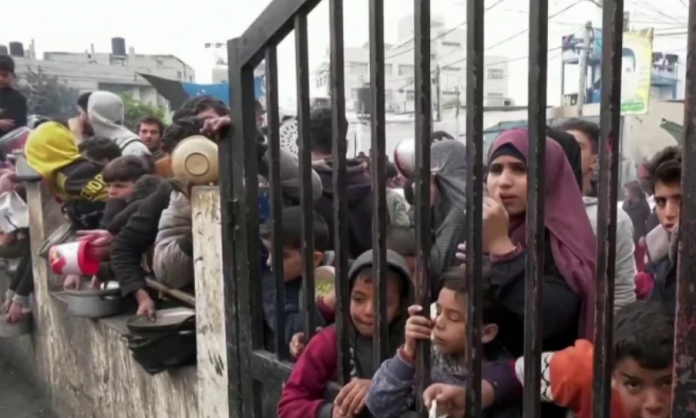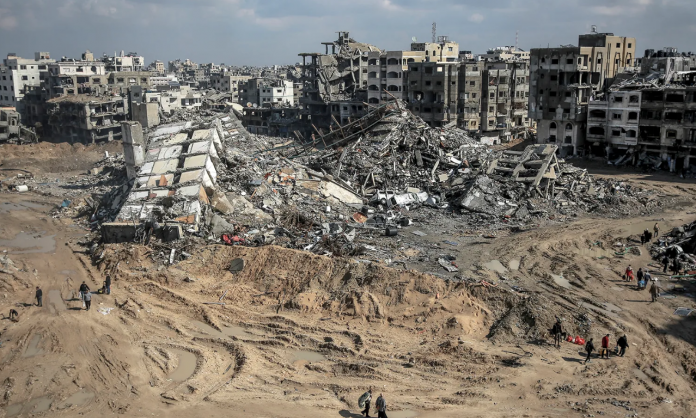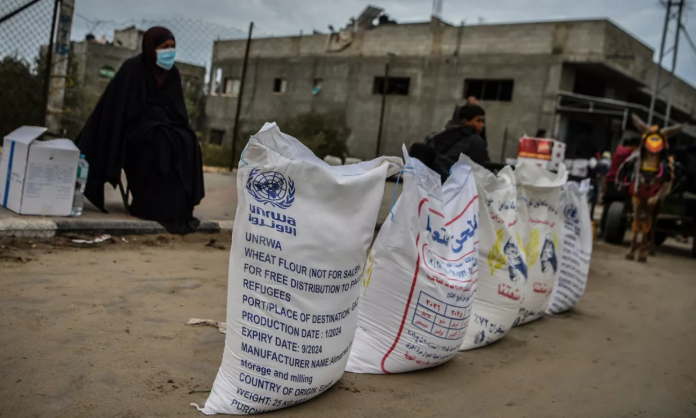Iran faces a crisis unparalleled since the 1979 revolution. The most significant strikes in 40 years and a new wave of anti-regime protests have swept the country since June. Crushing US sanctions, endemic regime corruption, the costs of Iran’s imperialist interventions in Syria, Lebanon, Iraq and Yemen, and the worst COVID-19 outbreak in the Middle East have crippled the Iranian economy.
The price for these monstrosities has been paid by the working class and the poor, 60 percent of whom now live at or below the poverty line in a country of 84 million people. The rich—including the clerical, military and political elites of the regime—have fared differently. As the crisis for workers has worsened, wealth for the richest in Iran has increased.
Iran now has more millionaires than Saudi Arabia. “In 2020, the number of high-net-worth individuals in Iran grew by 21.6 percent, way above the global average of 6.3 percent”, notes Forbes magazine. “The collective wealth of these dollar millionaires grew even faster at 24.3 percent.” The wealth of the military core of the regime—the Iranian Revolutionary Guard Corps, the de facto state and an economic industrial monolith that controls the official and black economy—has been estimated to be equivalent to between one-third and nearly two-thirds of Iran’s GDP.
The reinstatement of economic sanctions by the US in 2018 has hit the Iranian working class hard and exacerbated the devastation of the pandemic. Coupled with the corruption and mismanagement of the economy by the regime, the impacts of the broader economic crisis are devastating. Inflation has soared to 50 percent. The average price of basic food items has increased by more than 70 percent in urban centres in the past year. The cost of bread has increased by 30 percent and the cost of meat by more than 120 percent, meaning it is now out of reach for most Iranians, as are other staple proteins like eggs. Rental costs have risen by 39 percent in Iran’s cities in the past month at the same time as the Iranian currency’s value has dramatically declined.
Youth unemployment rose to 24 percent in the last quarter of 2020, and official estimates of jobs lost during the pandemic are around 2.5 million, a figure likely to be lower than reality given the unreliability of government statistics. Iran is facing its fifth wave of COVID-19, and a picture is beginning to emerge of the horrific consequences of the regime’s failure to address the pandemic. Fewer than 3 percent of Iranians have been vaccinated. While US sanctions have greatly restricted access to essential medical equipment, in January, Iran’s Supreme Leader Ali Khamenei banned the importing of Western vaccines.
Immense class inequality, poverty and systemic discrimination of oppressed minorities, as well as the failure of the regime to provide economic relief and essential health and welfare infrastructure during the outbreak, have resulted in the deaths of a conservatively estimated 100,000 people. Almost 4 million people are estimated to have contracted COVID-19 so far. Sistan and Baluchestan province in the south is experiencing a worse outbreak than the whole of neighbouring Pakistan. This week, health officials warned that hospitals have reached capacity; Iran Daily, the government’s official newspaper, reported that people are being buried in mass graves in several provinces.
Alongside the worsening pandemic, a series of power blackouts hit major cities, including Tehran, in recent weeks, and environmental disasters—including a drought, severe sandstorms and a life-threatening water crisis created by the corrupt management practices of the regime—have triggered a wave of protests during a dangerously hot summer. Those protests began in the oil rich southern province of Khuzestan on 15 July and triggered anti-regime solidarity protests around the country in parallel with a nationwide strike wave in the oil and petrochemical sector that began on 16 June.
Khuzestan, which is central to Iran’s economy and national security, and a particularly explosive microcosm of Iran’s crisis, was the first province to launch protests in November 2019, which then swept the country into an uprising against the regime’s decision to triple fuel prices. Khuzestan is home to 80 percent of Iran’s oil fields and 60 percent of its gas reserves, and, with the largest area of harvestable land, is the country’s top producer of wheat, grain and legumes. It also produces much of Iran’s sugar cane and sugar beet and is home to Iran’s biggest steel exporter in the capital city, Ahvaz.
Despite being the wealthiest province in Iran, it is one of the most underdeveloped and has been one of the regions hardest hit by the pandemic; one-quarter of all Iranian cases in 2020 were in Khuzestan. The south-western province, bordering Iraq, is an ethnically diverse territory that is home to the majority of Iran’s oppressed ethnic Arab population—a population, alongside other ethnic minorities in Khuzestan, that has long been the target of intense repression and racism by the regime.
On 15 July, protests broke out over severe water shortages and collective rage against decades of environmental mismanagement. Khuzestan used to have a third of Iran’s water resources. But because of reckless decisions to build poorly planned dams and the diversion of water to other parts of the country, the province has been ravaged by cyclical droughts, floods and dust storms that have intensified for a decade. Thousands of people visit hospitals in Ahvaz each year with respiratory problems associated with dust storms.
The province was a front line in the Iran-Iraq war. Forty years later, infrastructure has still not been rebuilt. Privatisation of industry has resulted in wages being eviscerated and local oppressed minorities locked out of employment in favour of poorly paid workers from other regions. Arab activists have been protesting the confiscation of local land for development projects for decades.
“There is no injustice bigger than sitting on an ocean of oil and gas and even seeing oil wells from your houses but struggling with unemployment”, an unemployed protester from Khuzestan told the Financial Times in 2019. More than 300 protesters were killed in the 2019 uprising in Khuzestan alone. This time, at least ten have been killed in the protests that began in July, at which people chanted, “The people want the regime to fall!”, “Down with Khamenei!”, “We don’t want an Islamic republic!” and “Down with dictatorship!”
Solidarity with the protests in Khuzestan spread to other regions. In Fardis, Alborz province, people gathered to express their solidarity with the protests in Khuzestan and chanted “Death to the dictator!” In Isfahan in central Iran, a large night protest chanted, “Isfahan, Khuzestan, unity, unity!” while protesters tore down a banner depicting Ali Khamenei. Further protests erupted in Tehran, both in solidarity with Khuzestan and against a series of blackouts, blamed on regime mismanagement of hydroelectric resources. Protesters in Tehran chanted, “Shame, Khamenei, let go of this country!” and “Mullahs, get lost!”
Several prominent unions, key to the development of the labour movement in recent decades, expressed solidarity with Khuzestan protesters, including the Haft Tappeh Sugarcane Workers Syndicate (located in Khuzestan) and the Tehran Bus Workers Syndicate. In their statement of solidarity with Khuzestan, the Tehran Bus Workers Syndicate said:
“The lack of water in Khuzestan today is rooted in the unprofessional, rapacious and profit-centred policies of the prior decades of capitalism in oil extraction and use of water for the steel industry, the income from which does not go to the people. These insatiable policies have deprived the people of Khuzestan of safe drinking water. Water is shut off for long hours and it is lacking for basic needs. Farmers and cattle growers have also been damaged and lost their livelihoods.”
Strikes of contract workers in the oil, gas and petrochemical sector began on 19 June—the day after the election of new hardliner President Ebrahim Raisi. It was the lowest voter turnout for any Iranian election in four decades. The strike began at the Biqdoon power plant in Asaluyeh and spread to workers in 100 petrochemical plants across fifteen provinces. Reports of the number of workers on strike range between 20,000 and 60,000.
The strikers are skilled manual workers—like welders, plumbers, electricians, scaffolders, moulders and warehouse workers—employed in oil, gas and petrochemical plants. The strike wave has been overseen by an informal council, established by militant workers, called the Organising Council of Contract Oil Workers, under the banner “1400 campaign”. (The year 1400 marks 2021 in the Persian calendar.)
The Organising Council, while not an elected representative group or a formal union, has tried to cohere contract workers in the petrochemical industry who are employed on a temporary basis, in appalling conditions, without the pay or benefits that permanent oil and gas workers receive. As part of a generalised neoliberal offensive in recent decades, the regime has constructed what it calls “special economic energy zones”, such as the Pars Special Economic Energy Zone in Asaluyeh, home to the South Pars gas field—the largest in the world. In these zones, designed as export zones for gas and oil, regular Iranian labour laws do not apply. The “special” thing about them is that workers can be employed on temporary contracts, without the protections, wages and entitlements of other workers.
Working in parallel with the special economic zones is a vast consortium of private contractors established within the oil and gas sector, widely understood to be controlled by corrupt regime officials within the Oil Ministry and senior figures in the Revolutionary Guards, who channel revenues back into regime coffers. These subcontractors employ contract workers like those tens of thousands who have been on strike since June. Interviews conducted with some striking workers by the paper Kayhan Life provide a glimpse into conditions.
“No-one monitors the Oil Ministry’s operations”, Reza, a contract worker in the oil sector, told the publication. “No-one knows the relationship between the contractors and state officials or how much bribes change hands under the table.”
“They boast about their so-called resilient economy, when in fact, they line their pockets with the fruits of our labour”, Alireza, a welder with more than a decade of experience, said. Milad, an engineer who works on a temporary contract, joined the strike and outlined some of the conditions in the sector:
“I can give you several examples. After a twelve-hour shift under a scorching sun, a worker returns to his dormitory, where his dinner comprises two boiled potatoes and an egg or a bowl of lentil soup. For lunch, he most likely had a bowl of macaroni with soya sauce. Even prisoners would refuse to eat these foods, let alone a worker who has worked for twelve consecutive hours and needs a nutritious meal.
“Dormitories resemble makeshift silos built to house victims of war or earthquake. They are more like tents set up in deserts, crawling with scorpions and other creatures. Many workers put the legs of their beds in gasoline-filled containers to stop scorpions from crawling up.
“There are not enough clinics or infirmaries, at work sites or in dormitories, to provide adequate health and medical care to workers. The buses that transport workers to various project sites have broken seats and no air conditioning. Just imagine a worker who has worked all day in temperatures above 50 degrees Celsius must ride this bus back to his dorm.”
The Organising Council has issued demands for an increase in wages, collective bargaining, payment of wages in arrears, on-time payment in the future and for permanent job security for those currently employed on contracts. Other workers in Iran have staged strikes and solidarity protests in unison with the contract workers in the oil and gas sector. Teachers and nurses, and truck drivers who transport oil, have been on strike and issued statements of solidarity. Reflecting a growing class consciousness in a developing labour movement in recent years, eight key unions at the forefront of the struggle issued the following statement of solidarity with the nationwide strike of contract oil and gas workers on 28 June:
“To the striking contract workers in the oil and petrochemical industry. As you have correctly concluded, to stage an effective protest against contractors, fixed-term contracts and low wages, and other issues, we workers must, above all else, organise our efforts and unite globally. Only through unity and solidarity can we move forward and achieve our demands. We welcome you and offer you our sincere support. We will benefit significantly from your experience during the current strike.
“To continue our efforts in achieving our demands, we must create trade unions and independent labour organisations; promote greater unity and communication between employees in different sectors; strengthen our solidarity with workers on permanent contracts; maintain vigilance in confronting employers; and establish funds to help the striking workers and their vulnerable families.
“We call on all workers, retirees, teachers, students, intellectuals, artists, journalists and all hardworking and honourable men and women in our society to support this labour movement and help the striking workers to achieve their rightful demands. Workers’ struggle to achieve their demands is like a mighty unstoppable wind and roaring wave. Long live the unity and solidarity of the workers!”
The response of the Iranian regime to the strikes has been a mixture of concessions and repression. According to rights groups and social media posts,700 contract workers were fired at a Tehran refinery. Contract workers have been fired around the country and starved by their employers, who withheld their food rations and locked them out of dormitories. The securitisation of the petrochemical industry and the restructuring of the sector by the regime in past decades impose restrictions on contract workers attempting to organise.
Specifically, the division of workers between permanent, more highly paid oil and gas workers who are fewer in number and more industrially powerful, and insecure workers on temporary contracts, is an obstacle created and leveraged by the regime. In the recent strike wave, the regime has offered pay rises and concessions to these more powerful oil and gas workers and repression to contract workers.
Unfortunately, while some permanent workers registered an intent to join the contract workers in their nationwide strike towards the end of June, this did not eventuate. For the strike movement in the oil sector to succeed, these workers must be drawn into the struggle. While the oil and gas sector in Iran remains a core centre of industrial power, it is a divided sector. And the Iranian regime has diversified the economy in recent decades, expanding the agricultural and manufacturing sectors.
This has provided more space for the regime to hold out under the crushing weight of US sanctions, as have the generalised impacts of a global slowdown in oil production and mobility worldwide related to the pandemic. For these reasons, and more, some caution is required in drawing comparisons between the current strike wave in the oil and gas sector and the strike wave of oil workers that was central to catalysing the 1979 revolution.
The election of Ebrahim Raisi with so few votes is both a signal of a crisis of legitimacy for the regime and a warning sign that it is hardening its approach to internal crisis, repression and foreign policy ambitions in the region. Before being elected president, Raisi was the head of the judiciary. In his 20s, he was appointed to the “death commission”—a collection of judges that ordered the executions of thousands of political prisoners in 1988. Throughout his career, he has been involved in the repression of political dissidents and ordered the execution of two protesters involved in the Green Movement in 2009.
Raisi will brook no resistance from protesters and striking workers in regions like Khuzestan, which borders oil-rich Iraqi cities such as Basra, where oil workers have been on strike in recent years alongside protesters raising similar demands against their own government—a government into which Iran has increasingly inserted itself.
This latest wave of protests and strikes in the oil and gas sector reflect both the depth of the crisis in Iran—politically, socially, economically and environmentally—and the growing confidence and organising potential of the Iranian working class. That leading sections of organised workers are emphasising solidarity among oppressed minorities and other workers and urging unity between contract workers and tenured workers is an inspiring and hopeful sign that demonstrates an intent to overcome divisions manufactured by the regime and the bosses.
The militancy of leading organisers in those and other unions, including teachers and nurses, and the militant organising of women’s rights activists and students, all of whom are facing down regime violence, torture and imprisonment, reflect the burgeoning potential and determination of growing layers of workers and radicals in Iran.




